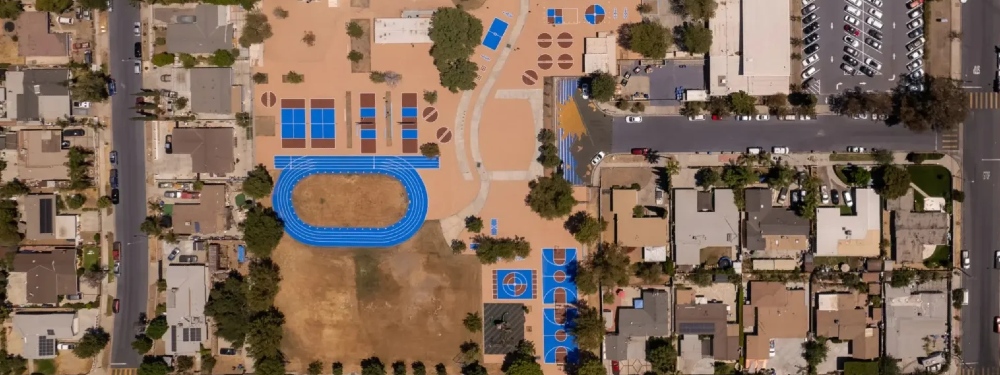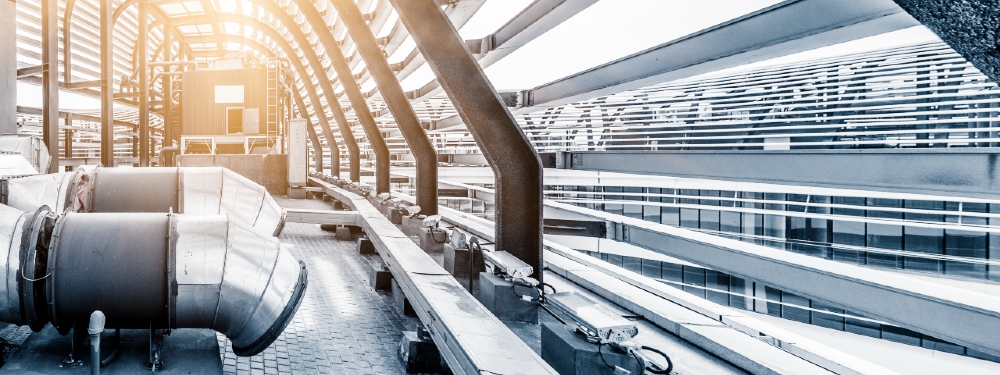Cooling energy efficiency standards and policies: Raising global ambition while lowering global temperatures
Cooling energy efficiency standards and policies: Raising global ambition while lowering global temperatures
A look back at the Clean Cooling Collaborative’s ‘Policies and Standards’ portfolio
As global demand for cooling soars, the energy efficiency of air conditioners and refrigerators will play a vital role in preventing run-away energy use and GHG emissions from the cooling sector. Energy efficiency standards, labels, and other policies are needed to drive the market towards the most energy-efficient appliances.
The growing demand for cooling
Globally, there are around 2 billion air conditioning units currently in operation. We expect this figure to roughly triple by 2050. If this prediction from the International Energy Agency (IEA) is correct, it’s the equivalent of 10 new air conditioners being sold every second for t he next 30 years.
Space cooling (e.g., air conditioning) is already one of the leading drivers of rising electricity demand in buildings, accounting for nearly 20% of the total electricity used in buildings, but electricity demand for cooling in buildings could increase by as much as 40% globally by 2030 if we don’t make major improvements to the efficiency of cooling equipment.

Appliances with greater energy efficiency use less electricity, which helps reduce the greenhouse gas (GHG) emissions coming from power plants. This is critical if we’re to limit global warming to 1.5°C. It also reduces the strain we’re putting on our energy systems, which will help support the global transition to clean energy and limit the occurrence of power outages.
While high-performance air conditioners (ACs) already exist and are available on today’s market, consumers aren’t choosing to buy them. According to IEA, “the average efficiency of air conditioners sold today is less than half of what is typically available on the shelves – and one third of best available technology.”
And it’s not only consumer choices that are an issue, even the most advanced air conditioners on the market are not efficient enough.
What we need is for manufacturers to bring super-efficient cooling appliances to the market as soon as possible, and for consumers to buy them. To achieve this, governments must work to encourage and support innovation from the private sector and demand from consumers.
Our cooling efficiency standards, labels, and policies
Since 2017, the Clean Cooling Collaborative (CCC) has been supporting ambitious countries with the integration of energy efficiency into their efforts to reduce the use of super-polluting refrigerants like hydrofluorocarbons (HFCs) as part of implementing the Kigali Amendment to the Montreal Protocol.
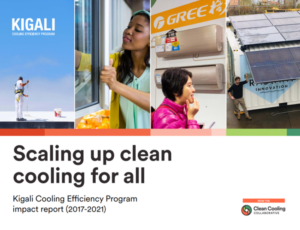
A major part of this work has been promoting national and regional energy efficiency standards, policies, and other programs to achieve major reductions in GHG emissions from cooling, with a focus on room air conditioners[1]According to IEA, 70% of AC units currently in operation around in residential properties. (RAC) and household refrigerators and freezers.
Alongside our implementing partners, we have supported the development and implementation of policies, standards, and programs in 35 countries. Together, these countries represent high potential for energy savings, good geographic spread, diverse market conditions (e.g., manufacturing and importing economies), and a sufficient level of capacity for implementation.
This work has included:
- Minimum Energy Performance Standards (MEPS), which establish a minimum energy efficiency level for appliances, thereby removing the most inefficient products from the market place;
- Energy labels, which help consumers identify products of higher efficiency and environmental performance;
- Compliance and awareness programs, which support the implementation of MEPS and labeling programs;
- Financial initiatives like rebate programs, which encourage consumers to buy products of higher efficiency; and
- Demand aggregation programs such as buyers’ clubs or public procurement programs, which encourage manufacturers to produce more products of higher efficiency while bringing down purchase prices.
Another important part of our work, and key to ensuring the success of implemented policies, standards, or programs, has been understanding the local context. We’ve worked alongside E3G, an independent climate change think tank, to build country-specific political and economic awareness into all policy-relevant strategies.
MEPS and labels
According to IEA, the energy performance of ACs could be improved by 50% with the introduction of efficiency standards. This would also help put cooling on track with the Net Zero Emissions by 2050 Scenario. When paired with other sustainable cooling approaches, such as efficient passive cooling and natural refrigerants, we could avoid becoming reliant on and locked into inefficient cooling appliances for the decades to come.
Despite their effectiveness, many countries still have weak, or even no MEPS for cooling technologies, as compared to global best practice.
During the first four years of our work (2017-2021), we supported the development and implementation of 15 AC-related MEPS, as well as six refrigeration MEPS, and five AC labels[2]Of these 26 MEPS and labels, 14 have been ‘locked in’, i.e., have been secured through law, adoption, and/or implementation. The remaining 12 are waiting to be formalized and are therefore considered ‘anticipated’. . Once fully implemented, IEA estimates that these 26 MEPS and labels could avoid just over 3 gigatons (Gt) of carbon dioxide (CO2) by 2050[3]The emissions reduction from the 14 ‘locked in’ standards is over 1.6 Gt CO2 by 2050. The remaining 12 ‘anticipated’ policies are on track to deliver an additional emissions reduction of just over 1.8 Gt CO2 by 2050..
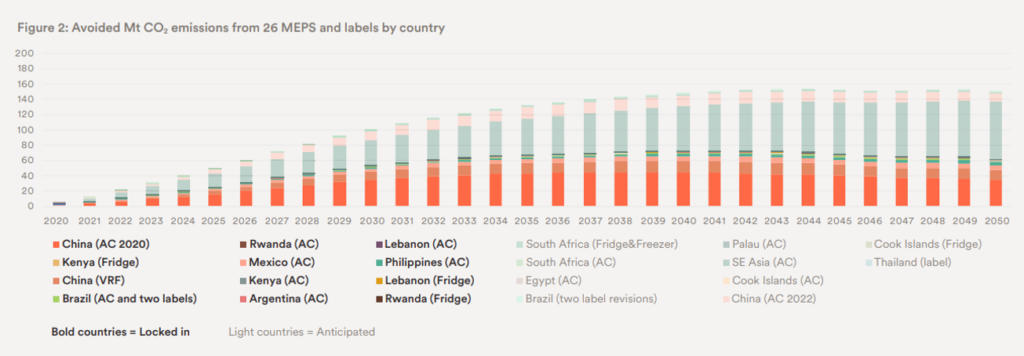
The expected electricity savings resulting from implementing the 26 MEPS and labels would be worth around $805 billion in reduced electricity costs to consumers cumulatively through to 2050. This doesn’t even capture the significant additional savings that utility companies can realize on the generation and delivery side as a result of reduced electricity demand from cooling.
Across these standards and labels, the largest potential impact comes from the second stage of China’s RAC MEPS once it’s locked in later this year. Over the past few years, China’s domestic AC market has undergone a rapid transformation, having shifted away from inefficient, fixed-speed ACs and toward efficient, variable-speed ACs. As of July 2021, fixed-speed ACs accounted for only 2% of the domestic market, with variable-speed ACs making up the rest.
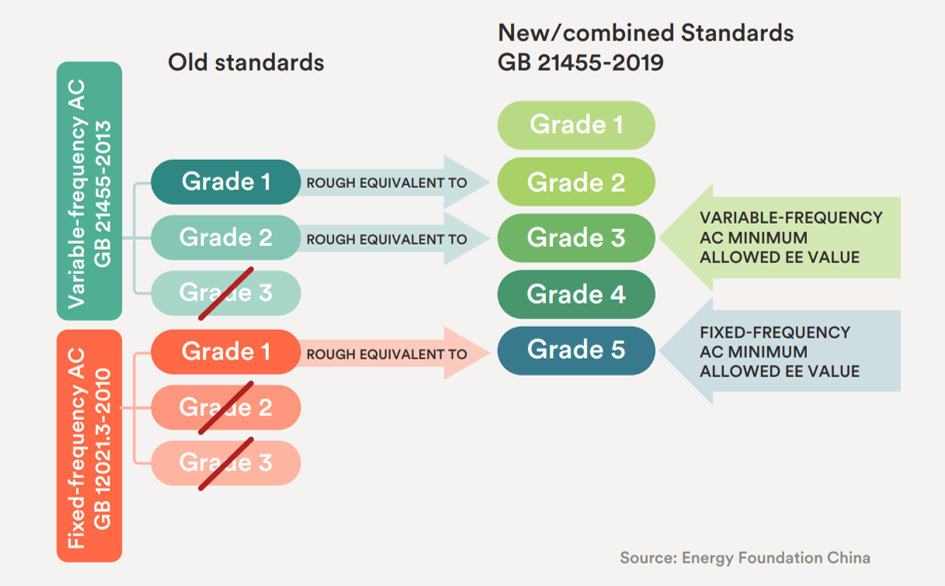
The second stage of China’s MEPS will eliminate current Grade 4 and Grade 5 ACs from the market. This will result in moving the entire of the Chinese market away from inefficient single-speed units to efficient variable-speed units. As the global leader in the production of RACs, China’s transition to more efficient cooling appliances sets an important benchmark for other countries and regions.
China’s RAC MEPS was developed in conjunction with the Model Regulation Guidelines for Energy-Efficient and Climate-Friendly Air Conditioners from the United Nations Environment Programme’s (UNEP) United for Efficiency (U4E) initiative. These model regulations are a guidance tool for governments that are considering a regulatory framework for appliance energy efficiency and low-GWP refrigerants. The guidelines aim to accelerate the adoption of robust efficiency standards and labels where they don’t already exist, and to raise the ambition of outdated policies.
In addition to the model regulation for air conditioners, we have supported the development of model regulations for energy-efficient and climate-friendly household refrigerators and freezers and commercial refrigeration equipment. There’s an ongoing effort to deploy these model regulations globally, with several countries adopting them outright and others using them as an example of best practice when formulating their own policies.
HFC phasedown policy
In close coordination with others, we’ve helped support major strides in HFC regulation, in particular in the United States (US), with the passage of the American Innovation and Manufacturing (AIM) Act. This regulatory act gives the US Environmental Protection Agency (EPA) the authority to regulate HFCs.
The AIM Act requires an 85% phasedown in HFC supply over the next 15 years and brings the US in line with the Kigali Amendment, which is the global agreement to phasedown the use and production of HFCs over the coming decades.
From this monumental and collaborative effort comes a series of rulemakings that are currently underway.
What next for Clean Cooling Collaborative?
Over the coming years, CCC — with a focus on China, India, Southeast Asia, and the US — will continue to work to raise the ambition of MEPS and labeling programs. These regions a will be responsible for about 75% of GHG emissions from stationary AC in 2050.
Building on the success of existing model regulation guidelines, we will be working with U4E and its partners to development additional guidance for off-grid refrigeration and ceiling fans, both of which are vital for improving access to efficient cooling in under-served communities.
We will also ramp up our involvement in HFC policy, helping countries move beyond the Kigali Amendment and drive low-GWP (global warming potential) refrigerants to the market.
By helping governments, businesses, and consumers step up, we can collectively raise cooling efficiency standards, take stress off the electric grid, and transform markets so that efficient, clean cooling is accessible and affordable to all.
This blog is part of a series looking back at the impact of our Phase I projects. Other blogs include a review of our finance portfolio, our access portfolio, and our efficiency portfolio.


